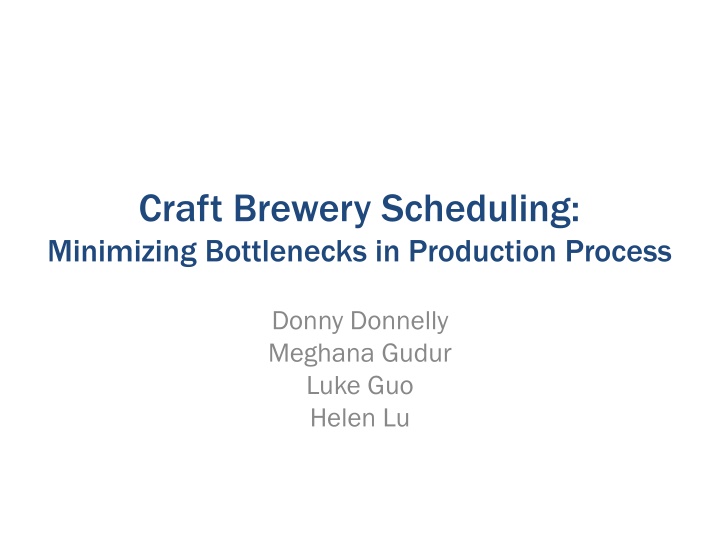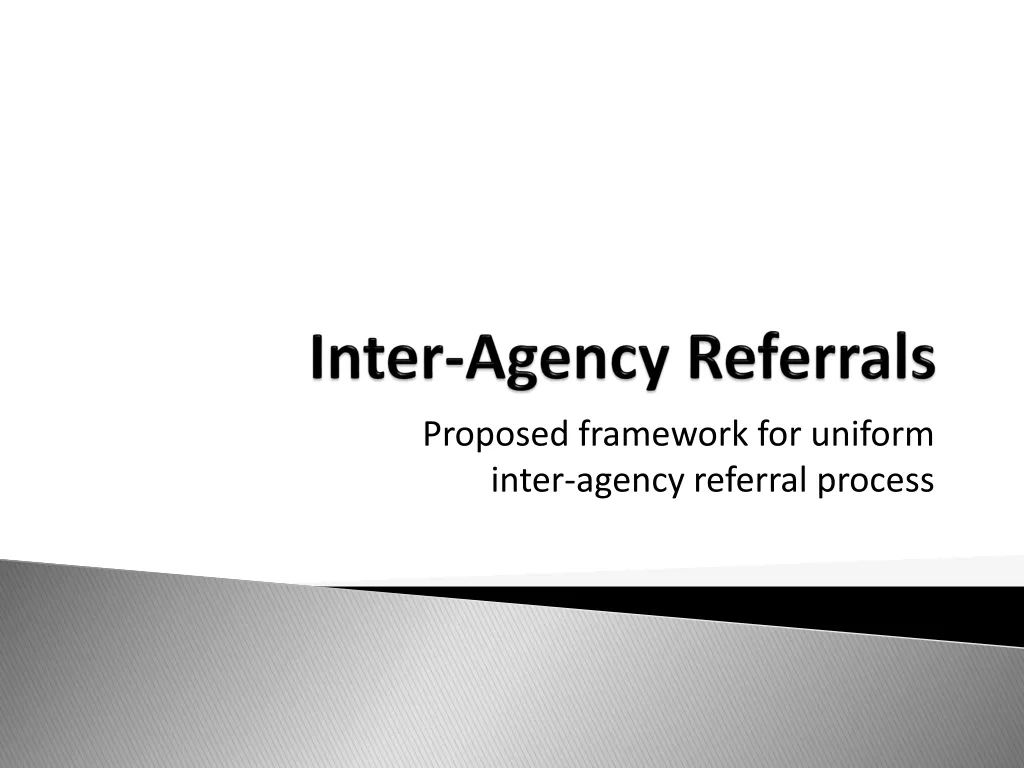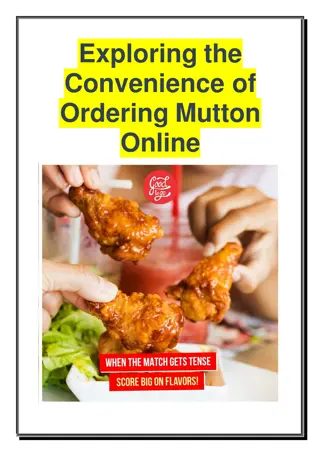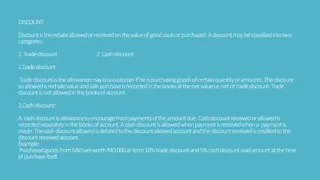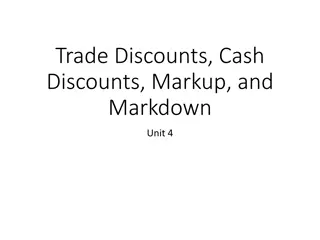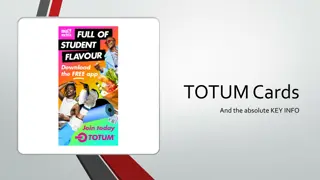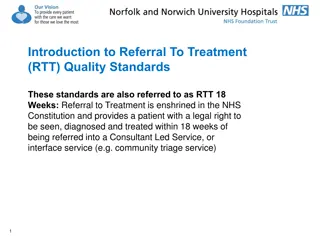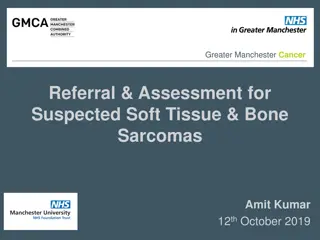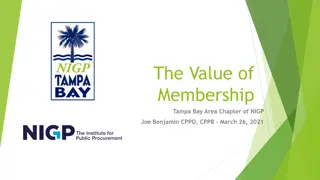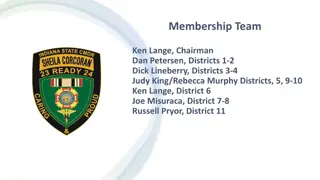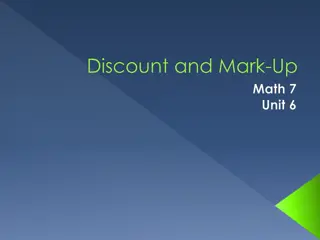Earn Discounts and Rewards with Master Brewers Membership Referral Program
Share the value of your Master Brewers membership with others in the brewing industry and get rewarded! Refer new members to receive a 20% discount on your dues and the chance to renew for free by referring 5 new members. It's easy - simply share the 20% discount code and ensure they list you as the referrer. Track your referrals and enjoy automatic discounts on your dues. Join the United We Brew community and start benefiting today!
Download Presentation

Please find below an Image/Link to download the presentation.
The content on the website is provided AS IS for your information and personal use only. It may not be sold, licensed, or shared on other websites without obtaining consent from the author.If you encounter any issues during the download, it is possible that the publisher has removed the file from their server.
You are allowed to download the files provided on this website for personal or commercial use, subject to the condition that they are used lawfully. All files are the property of their respective owners.
The content on the website is provided AS IS for your information and personal use only. It may not be sold, licensed, or shared on other websites without obtaining consent from the author.
E N D
Presentation Transcript
Craft Brewery Scheduling: Minimizing Bottlenecks in Production Process Donny Donnelly Meghana Gudur Luke Guo Helen Lu
Executive Summary Production scheduling for a microbrewery Craft breweries often lack sufficient human capital and resources to optimally plan production processes Major bottleneck procedures that considerably slow down production include cleaning and changeover times Background Modeling bottlenecks as a mathematical problem, we aim to minimize production time when producing: Three product types On three sets of machines Integer Program Genetic Algorithms Simulated Annealing Heuristic Algorithms Simulated Annealing provides the best solution Integer Program cannot be used for large scale production Key Takeaways
Problem Statement Creating business impact from enhanced mathematical analysis Problem: Microbreweries lack planning divisions and face many bottlenecks in production Opportunity: Reduce time spent on transitioning between machines Approach: Approach: Overview: Overview: Simplify Production Using Assumptions Client: Small Microbrewery Formulate into Integer Program Objective: Optimally use machines to minimize production time Solution: Build sequence of production applying analytical and heuristic methods Apply Heuristic Algorithms Long-term Outcome: Focus more on profit- driving activities like fermentation rather than cleaning Implement Findings
Beer-making Process Breaking down the problem Brewing production depends on: Fermentation time A product-specific time needed for yeast to act on brew Setting up time A vessel- and product-specific time to get ingredients and transport product on vessels required before every batch Cleaning time A vessel-specific time for cleaning required before every batch Changeover time A non-variable time that only occurs on a vessel if it is switching to produce a brew different than its last batch Visualizing decision making points
IP Formulation Formulating the beer production process as an integer program Variable Variable Description Description Tp Tsetup Tclean Tchange Tdue i Fermentation time of each product Setting up time Cleaning time Changeover time Due date for each product Number of products j Number of vessels xij Number of occurrences of operation cij vj n1 Binary: 1, if i is working on vessel j; 0, otherwise Capacity of vessel j Number of processing times for product to be produced as same as previously finished batch n2 Number of processing times for product to be produced as different as previously finished batch m1 m2 Ni Number of times product to be produced as same as previously finished batch Number of times of product to be produced as different as previously finished batch Demand for each product
IP Formulation Formulating the beer production process as an integer program Fermentation times Setting up and cleaning times Setting up and cleaning and change over times Each vessel produces one batch of one product at a time Non-changeover scenarios Particular for changeover scenarios
IP Formulation Assumptions Forming assumptions to simplify data Fermentation times Due dates assumed from demand
IP Findings Contextualizing our outputted solutions to draw intermediate conclusions Production times for each product Whether or not the next batch production will be changed to another vessel is dependent on not only demand and capacity but also time Time subscripts will have to be implemented in order to see when changeover is needed Subscripting x and c with time k would make the IP NP-Hard
Heuristics Understanding genetic algorithm and simulated annealing Model Assumptions Model Assumptions Product orders form batches Batches are produced when size reaches the capacity of its assigned vessel and when that vessel is idle Surplus of a batch is added to the next batch of orders Producing a product on a different vessel leads to changeover time Formulation of Schedule Formulation of Schedule The schedule for a product is a sequence of 100 numbers, one vessel assignment for each day such that no product shares the same vessel on the same day Genetic Algorithm Genetic Algorithm Generate an initial population Select parents from the population Use crossovers and mutations to generate new individuals Repeat Simulated Annealing Simulated Annealing Create a random schedule from current one If better, accept. If not, accept with a probability dependent on temperature Decrease temperature and repeat
Heuristics Understanding genetic algorithm and simulated annealing Simulated Annealing Simulated Annealing Initial Temperature: 100 Reduction Function: ? ? = 0.99? Neighbor: 10 random interchanges Genetic Algorithm Genetic Algorithm Crossover Probability: 0.8 Mutation Probability: 0.2 Generation Gap: 0.9 Population Size: 20 Results Results Compared to a non optimized schedule, ~35% decrease in total production time for genetic algorithms and ~16% for simulated annealing
Key Takeaways Moving forward with next steps for discovery Provides us with a concise analytical model of constraints However, it does not provide us with a realistic sequence of batch production for larger scale problems Genetic Algorithm provides us with the shortest processing time Compared to a non optimized schedule, ~35% decrease in total production time for genetic algorithms and ~16% for simulated annealing Simulated Annealing improves upon non- optimized times Implement a hybrid of the Genetic Algorithm and Simulated Annealing Scale up our optimal heuristic for larger production processes Future Steps Future Steps Integer Program Integer Program Heuristic Algorithms Heuristic Algorithms
